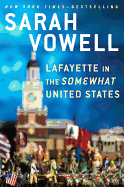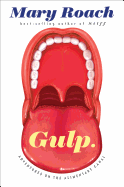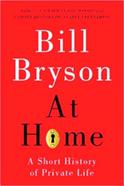 Do you ever find yourself interrupting your reading to tell someone, anyone, a new and interesting fact you've just learned? "Did you know Lafayette was only 19 when he was made a general in the American Revolution?" (Me while reading Sarah Vowell's Lafayette in the Somewhat United States [Riverhead, $16].) "Did you know what actually happens to your body if you donate it to science?" (Me while reading Mary Roach's Stiff [Norton, $15.99]). These are some of my favorite nonfiction reads--the kind of book that makes you want to shout your new knowledge from the rooftops.
Do you ever find yourself interrupting your reading to tell someone, anyone, a new and interesting fact you've just learned? "Did you know Lafayette was only 19 when he was made a general in the American Revolution?" (Me while reading Sarah Vowell's Lafayette in the Somewhat United States [Riverhead, $16].) "Did you know what actually happens to your body if you donate it to science?" (Me while reading Mary Roach's Stiff [Norton, $15.99]). These are some of my favorite nonfiction reads--the kind of book that makes you want to shout your new knowledge from the rooftops. Truly, any of Roach's books would fall into this genre, which I've affectionately dubbed "did you know" nonfiction. In each of her books, she takes a close look at topics most readers will know little about--indeed, topics most readers won't even know they want to know more about until they have started reading. The aforementioned Stiff explores the science of human cadaver research; Gulp (Norton, $15.95) studies the alimentary canal (did you know that's the scientific name for the passage along which food passes through the body?); Spook (Norton, $15.95) covers the science of the afterlife.
Truly, any of Roach's books would fall into this genre, which I've affectionately dubbed "did you know" nonfiction. In each of her books, she takes a close look at topics most readers will know little about--indeed, topics most readers won't even know they want to know more about until they have started reading. The aforementioned Stiff explores the science of human cadaver research; Gulp (Norton, $15.95) studies the alimentary canal (did you know that's the scientific name for the passage along which food passes through the body?); Spook (Norton, $15.95) covers the science of the afterlife.  Bill Bryson writes with similar gusto (and humor) about topics large and small. It's impossible to read a book titled A Short History of Nearly Everything (Broadway Books, $18) without picking up at least one new factoid to share with friends. But even more specific books of his, like At Home (Anchor, $17), are packed with fascinating details--this one about the history of the home as we recognize it today. Emily Nagoski turns that same detailed eye to women's sexuality in Come As You Are (Simon & Schuster, $16.99); reading it is sort of like taking a sex-ed class that you actually want to take. And, like so many of these, it is packed with the kind of fascinating details that were likely glossed over in school. --Kerry McHugh, blogger at Entomology of a Bookworm
Bill Bryson writes with similar gusto (and humor) about topics large and small. It's impossible to read a book titled A Short History of Nearly Everything (Broadway Books, $18) without picking up at least one new factoid to share with friends. But even more specific books of his, like At Home (Anchor, $17), are packed with fascinating details--this one about the history of the home as we recognize it today. Emily Nagoski turns that same detailed eye to women's sexuality in Come As You Are (Simon & Schuster, $16.99); reading it is sort of like taking a sex-ed class that you actually want to take. And, like so many of these, it is packed with the kind of fascinating details that were likely glossed over in school. --Kerry McHugh, blogger at Entomology of a Bookworm

